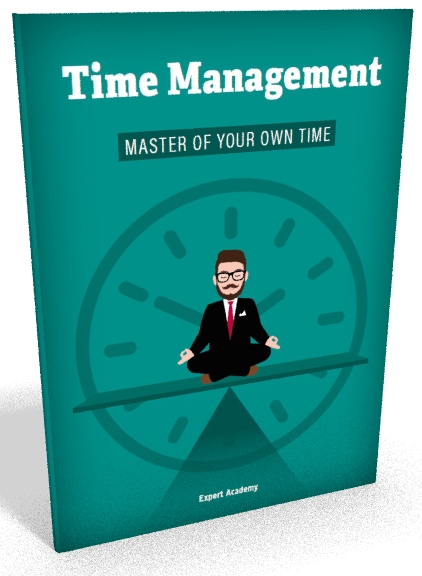10 Tips to Achieve More in Less Time

Do you know that feeling when 24 hours in a day simply isn't quite enough for you? The constant pressure from colleagues or clients who expect an immediate response, urgent emails demanding your attention, a constant stream of messages and requests interrupting your work....
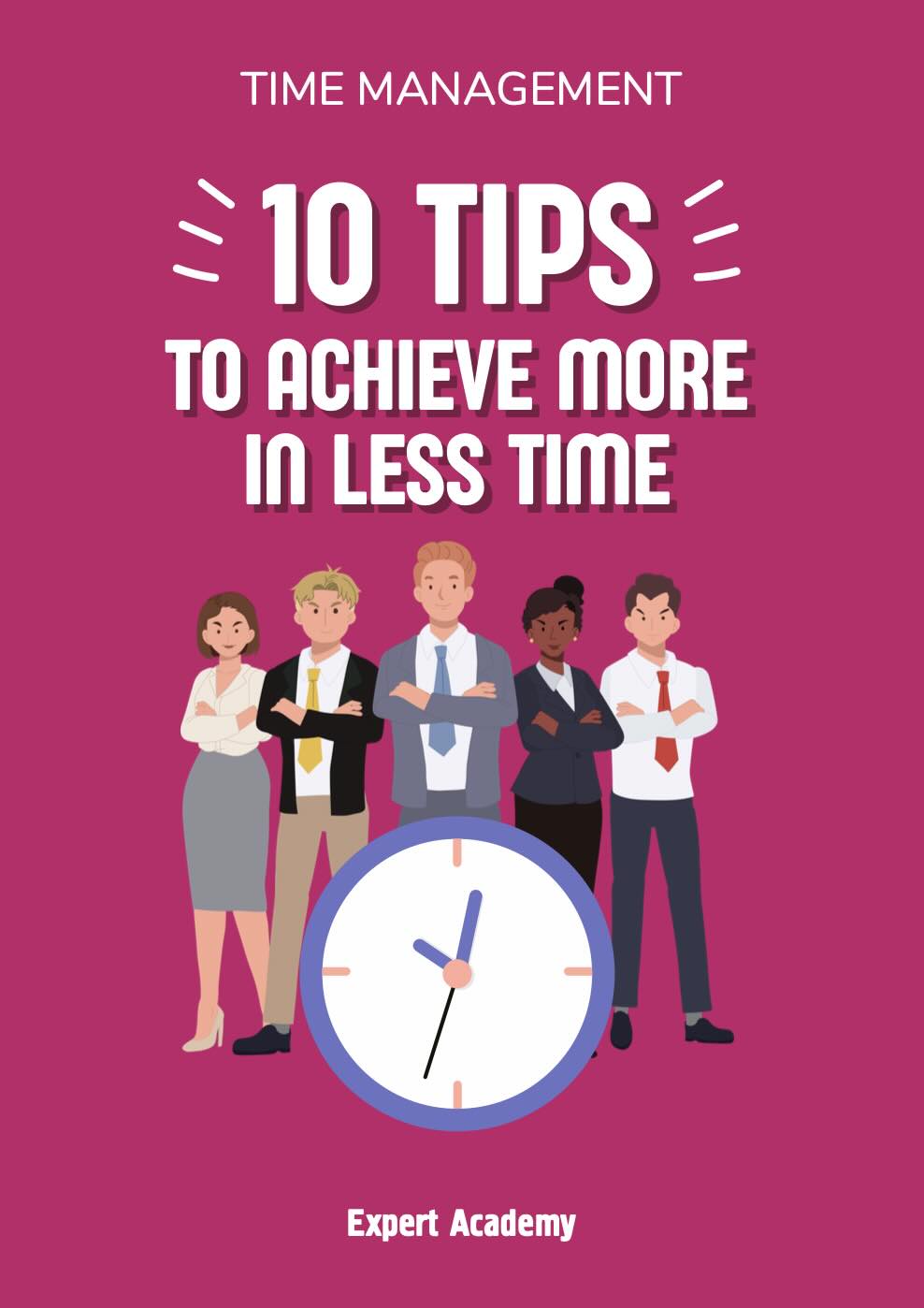 High time to take back control and work smarter instead of harder. Fortunately, there are simple and effective time management tips.
High time to take back control and work smarter instead of harder. Fortunately, there are simple and effective time management tips.
Bring structure to chaos, make meetings shorter and more efficient, schedule deadlines at work with ease, maintain focus and concentration during interruptions? These tips are designed to help you better manage your time and lower your stress levels.
Want to read this article later as a convenient pdf?
Download the e-book with all the tips from this article
10 time management tips to achieve more in less time
1. TIME BLOCKING
Group taks as much as possible
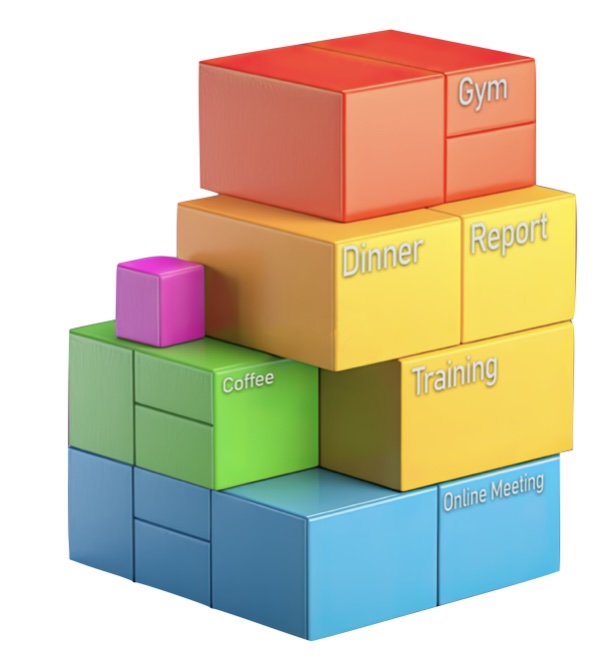
Time blocking is a technique where you reserve specific blocks of time for specific tasks. By breaking up your working day into defined time slots for different activities, you can
better focus on a task without distractions.
Moreover, it helps you prioritise and avoid the tendency to procrastinate on tasks. Instead of just having a to-do list with all your tasks and appointments mixed together, time blocking takes you a step further by setting aside a specific block of time for each ask.
To use time blocking effectively, start by making a daily or weekly schedule in which you divide your tasks into different time blocks.
Prioritise important and long-term tasks and make sure you are realistic when planning the time you allocate to each task.
Also, remember to include short breaks between time blocks to stay fresh and maintain your concentration.
2. THE 2-MINUTE RULE
Can it be done quickly? Do it now!
A simple but effective life hack is the 2-minute rule. If a task takes less than 2 minutes to
complete, do it immediately. These can include emails that could be answered quickly, small adjustments to a document, or a quick phone call. By completing these small tasks immediately, you
prevent them from piling up and overwhelming your to-do list.
It also allows you to spend more time on more complex and important tasks.
Suppose you receive an e-mail asking your colleague to share a file. If sharing the file takes less than 2 minutes, do it immediately instead of putting it off. This will save your time and prevents you from forgetting the task later on.
Small tasks can sometimes unknowingly take up a lot of mental space, especially if they linger and pile up. By dealing with them immediately, you prevent them from becoming a source of constant concern.
This helps you think more clearly and focus on more important tasks, reducing your overall stress level.
Completing small tasks gives you an immediate sense of accomplishment and control. It creates a positive feedback loop, with each completed task motivating you to keep going and achieve
more. This sense of accomplishment can boost your self-confidence and give you energy to tackle the rest of your to-do list.
3. FOCUS TIME
More flow less distraction
Distractions can seriously affect our productivity. You will be better able to focus on your work with fewer distractions going on around you. Put your phone on silent or in non-intrusive mode, block access to social media and make sure your workplace is tidy.
If you have colleagues who often distract you, clearly communicate your work schedule and the times you don't want to be disturbed. If you have tasks where distractions are inevitable, use smart hacks like the Pomodoro technique, where you work in short intervals followed by short breaks.
If you are often interrupted by phone calls and notifications, put your phone on silent or in no-disturb mode during your working hours. Also put your phone out of reach to reduce temptation. Make sure your workspace is organised and clean so that you are less distracted by clutter.
What is the Pomodoro technique?
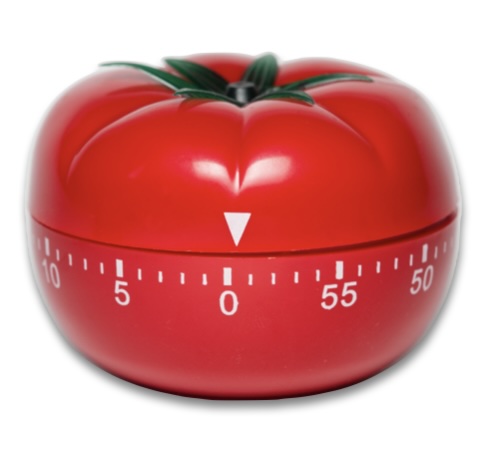
It is a technique that is about dividing your working time into defined intervals, usually 25 minutes, followed by short breaks. The name ‘Pomodoro’ is Italian for ‘tomato’ and refers to the classic kitchen timer in the shape of a tomato.
Here's how it works:
- Choose a task you want to complete.
- Set a timer for 25 minutes, the ‘Pomodoro’ session.
- Continue working on the task until the timer goes off, without interruptions or distractions.
- Take a short 5-minute break after each Pomodoro session.
The Pomodoro technique helps you stay focused and productive by dividing your work into manageable chunks.
4. THE 80/20 RULE
More results with less effort
According to the 80/20 rule, the balance between the input and output of your work is rarely balanced. For example: 20% of products generate 80% of sales.
Applied to your job, it means that about 20% of your efforts produce 80% of the results.
Learning to recognise and focus on that 20% is the key to using your time most effectively.
Here are a few quick tips for applying the 80/20 rule.
Take a good look at the people around you. Twenty per cent of your colleagues, co-
workers or team members are likely to give you 80 per cent of the support and satisfaction you need. They are the source of your success. Take good care of them.
Also, take a critical look at your job tasks and your professional life. Ask yourself: What is
bringing the most benefit? Which 20% of my work is best for me to concentrate on?
It's a way of optimising your use of time in line with the tasks that give you the most value or help you achieve your objectives.
Applying the Pareto rule allows you to focus on the tasks that contribute most to your professional
success and have the greatest impact. This means prioritising and spending your time on the tasks that are most important and urgent. This way, you can increase your productivity and achieve better results with less effort.
5. ZERO INBOX
Clear inbox, clear mind
Emails can quickly become overwhelming, so keeping your inbox under control is essential. This creates more peace of mind, greater productivity and more sense of well-being. The Zero inbox just means an empty mailbox at the end of every working day.
Here's how to do it:
- Go through your inbox and assess each e-mail.
- If an e-mail takes less than 2 minutes to answer or deal with, do it immediately.
- If an e-mail takes more time, mark it and schedule a specific time block to deal with it at a later time.
- After you have processed each e-mail, archive it or move it to specific folders. For example, create folders such as ‘Action Required’, ‘Waiting for Response’, or ‘Follow Up’.
By emptying your inbox, you prevent emails from piling up and becoming a cluttered
jumble. An empty inbox also gives you a clear overview of your tasks and commitments. You don't have to scroll through a pile of emails to see what you still have to do.
By regularly managing your inbox and processing emails, you don't waste time reading through the same emails over and over again or looking for important messages among the clutter.
Meer info: Productive with Outlook
6. LEARN TO SAY SO
Get rid of the monkeys on your shoulder
While it is important to be a team player, it is also good to know when and how to set
boundaries. How often does it happen that you say ‘yes’ to others to avoid an unpleasant situation?

Both in the office and in our free time, we are very often confronted with all kinds of questions, invitations or unnecessary obligations, which we are all too happy to accept but find it difficult to say ‘no’ to. As a result, our own priorities are often compromised.
Give your general well-being a boost and say ‘no’ more often. That way, you will have room for the really important things. If you decide to agree to do some work for others, negotiate a deadline that allows you to complete the task without compromising your own goals. A healthy dose of assertiveness can certainly work wonders.
How to say no?
It can be hard to say ‘no’, especially if you always feel
like pleasing others. But in fact, every time you say ‘no’
to something that does not contribute to your goals, you say ‘yes’ to yourself and to your priorities.
With some practice and self-awareness, you can learn to say ‘no’ more effectively and conserve your time and energy for the things that really matter.
Learn more: Assertive Communication
7. LESS MEETINGS
The best meeting is no meeting
Poorly conducted meetings are time wasters, not only for yourself but also for the other
participants. Make sure your presence at the meeting is useful and that you are not just meeting for
the sake of meeting.
Want to have productive meetings? Here's what you can do:
- Ask yourself: do I really need to be there and for the entire duration of the meeting? Often your presence in meetings is not necessary and therefore a waste of time.
- Suggest that a colleague is present at the meeting and that they will brief you
- afterwards.
- Is a meeting even necessary? Perhaps it can also be arranged via conference call or e-mail.
- Ask to deal with the agenda items relevant to you first, so you don't have to attend the
- entire meeting.
Bonus tip:
When scheduling a meeting, allow time BEFORE and AFTER the meeting and certainly avoid back-to-back meetings. After all, chances are that a meeting will run a little late and you will consequently be short of time for your next appointment. You probably have some things to prepare before, and even after the meeting you may need to do some research, write down action points or forward information.
So block out at least an extra 15 minutes before and after your meeting. Is that extra time not needed? Then it will certainly come in handy for a chat, coffee or rest break in your busy day.
8. AVOID PROCRASTINATION
Group tasks as much as possible
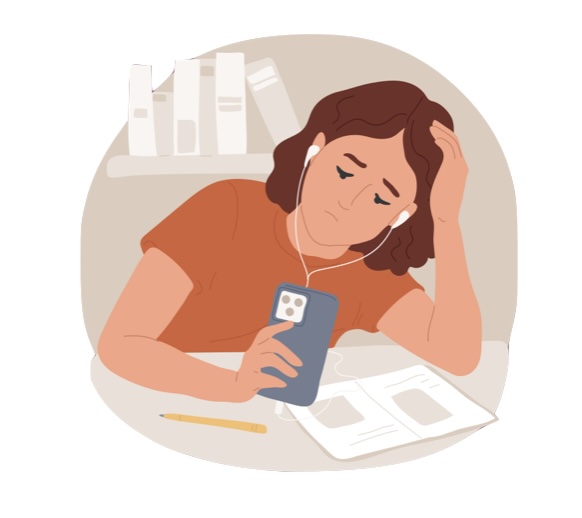
Procrastination is a common phenomenon with several causes. One of the main factors is perfectionism. People postpone tasks because they are afraid they cannot meet their own (too) high standards. This fear of possible criticism or disappointment keeps them
from starting it.
In addition, a lack of intrinsic motivation can play a role. If people are not motivated for a task because they consider it boring or uninteresting, they will often put it off.
Finally, a sense of overwhelm can cause people to put off tasks. When a task seems too big or complex, it can be very tempting to keep putting it off..
How to deal with procrastination?
1. Make tasks manageable: Divide big tasks into smaller, achievable tasks. This makes it easier to get started and keep motivation high.
2. Stay focused: Identify and reduce possible distractions in your work environment, such
as social media, emails or unnecessary notifications. Create an environment that's conducive to focus and productivity.
3. Reward yourself: Set rewards for completing tasks or achieving milestones. This can boost your motivation and help you not to procrastinate on tasks.
9. STOP MULTITASKING
One thing at a time
There is no doubt that multitasking is bad for the quality of our work: it increases the likelihood of mistakes and also causes us to get our work done slower.
One of the reasons we do it anyway is because we are addicted to the incentives and mental rewards we get when presented with a small or easy task. Think of reading an e- mail or the many notifications on your smartphone.
After all, every time we do that, we experience a new stimulus, and that activates dopamine (the happiness hormone) in our brain. So you get an instant reward. And because our brain loves quick rewards, we are constantly looking for the next stimulus. Our brain is triggered by these impulses and immediately concentration takes a dive.
How to stop multitasking?
1. Don't start your day by checking your phone
Checking your phone as soon as you wake up causes you to hop from one stimulus to another and before you know it, you have lost half an hour. Start your day with your most important priorities and wait at least an hour before checking your phone.
2. Eliminate distractions
Turn off notifications from your email, chat and social media while you are at work. Consider setting aside time in your diary to concentrate on important tasks. Let colleagues know that too so they don't disturb you. It is best to make agreements about this (e.g. if I work with a headphone, I don't want to be disturbed).
3. Keep your workplace tidy and organised
Clutter creates distractions and turmoil in your mind. Organise your workspace so you can focus on one thing at a time. Put your phone and anything else you don't need right away out of sight, so they don't demand attention.
10. DELEGATE TO THE TEAM
Don't do everything yourself
If you work with a team, know that you are not alone. Dare to ask for help and see what you can pass on or delegate to others. This not only helps to reduce your own workload, but also to engage your team members and develop their skills.
Even if you are not a manager, there are certainly tasks where others can assist you or
even take them over. Perhaps a colleague has some spare time. Or team members might enjoy bringing in their specific expertise or skills.
In any case, communicate clearly about expectations and deadlines. Make sure the person to whom you pass the task on has a good understanding of what is expected. Show that you have confidence in the skills of others and give them space to perform tasks in their own way.
More info: Effective delegation
.
MORE TIME MANAGEMENT TIPS
Integrate all this in your daily work routine? Sign up for a course on time management.

